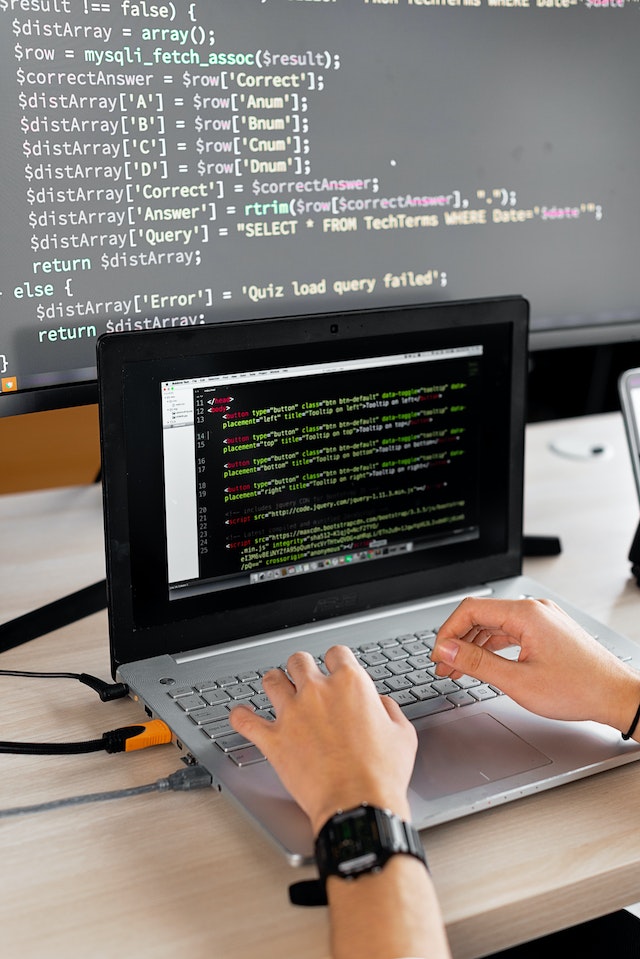Nowadays, cyber threats come in a wide variety of ways. Understanding the different cyberattacks helps us prepare for and defend against them. In this section, we’ll look at the top 10 cyberattacks that may harm anybody, from a single person to an entire corporation.
First, we’ll go through the several kinds of cyberattacks that exist:
- Malware Attack
These are among the most typical forms of cybercrime. Worms, spyware, ransomware, adware, and trojans are all examples of Malware.
Trojans are malicious programs that appear as safe ones to steal information. Ransomware is Malware that encrypts data and prevents you from accessing essential parts of your network; spyware is software that secretly collects all your personal information. Banner ads and other forms of advertising material are examples of adware.
Malware infiltrates a network by exploiting a vulnerability. Whenever a user visits a malicious website, opens an infected attachment in an email, or uses a USB flash device that has previously contained Malware.
Let’s have a look at how we might avoid a malware attack:
- Protect your computer with anti-virus software. It serves as an anti-malware shield for your computer. Popular antivirus programs include Avast Antivirus, Norton Antivirus, and McAfee Antivirus.
- Install firewalls. Having a firewall in place reduces the number of potential threats to your system. Each version of OS X comes with a firewall preinstalled by default; Windows has Windows Firewall, and Mac has Mac Firewall.
- Use caution while browsing the Internet, and stay away from strange sites.
- Keep your operating system and web browser up-to-date.
- Phishing Attack
One of the most pervasive forms of cyberattack is the phishing scam. It’s a kind of social engineering in which the perpetrator poses as a known or trusted party to trick their intended victim into opening malicious emails.
The victim opens the email without realizing what’s within it, and then they click on the link or open the attachment. This is how hackers steal usernames and passwords to access accounts. Malware may be installed through phishing attacks as well.
By adhering to the measures outlined below, you can protect yourself against phishing attacks:
- Carefully examine all incoming email messages. Spelling flaws and other obvious deviations from the standard structure of authentic emails are common in phishing attempts.
- Use a toolbar that can detect and block phishing attempts.
- Regularly change your passwords.
- Password Infiltration
A hacker uses software and tools like Aircrack, Cain, Abel, John the Ripper, Hashcat, etc., to guess your password. Password assaults may range from brute force to dictionary attacks to keyloggers.
Here are a few strategies for safeguarding your passwords:
- Use long, complex passwords that include letters, numbers, and symbols.
- Never re-use a password, especially if you have more than one account or website that requires a password.
- Be cautious about changing your passwords often to reduce your risk of becoming the victim of a hack.
- Avoid leaving any password indications in plain sight.
- Man-in-the-Middle Attack
Eavesdropping is another name for a Man-in-the-Middle Attack (MITM). A session hijacking attack occurs when an adversary interferes with a client and host’s normal exchange of information by pretending to be a third party. This is how hackers take and modify information.
The following procedures can help protect you against MITM attacks:
- Always keep the website’s safety in mind. Protect your data by encrypting it.
- Stay away from free Wi-Fi networks.
- SQL Injection Attack
When a hacker manipulates a regular Structured Query Language (SQL) query on a database-driven website, they launch a SQL injection attack. It spreads by exploiting search boxes on compromised websites to deliver malicious Malware and trick the server into giving up sensitive data.
This grants the attacker access to read, modify, and destroy database tables. The attackers may get administrative privileges in this way as well.
To avoid a SQL injection attack:
- Use an intrusion detection system designed to identify unwanted network access.
- Verify the accuracy of the inputted data. With a validation procedure, it keeps the user input under check.
- Denial-of-Service Attack
In the business world, a Denial-of-Service Attack is a major risk. Here, hackers send a deluge of requests to a specific system, server, or network to use all its available resources and bandwidth.
When this occurs, the load on the servers hosting the website becomes too high, and the site either goes down or becomes unusable. This means that valid service requests are being ignored.
When attackers utilize numerous hacked computers to execute this assault, it is also known as a DDoS (Distributed Denial-of-Service) attack.
Now, let’s examine how to thwart a distributed denial of service attack:
- Conduct a traffic analysis to detect malicious traffic.
- Recognize the indicators of impending disasters, such as sluggish network speeds or sudden website outages. The company must act swiftly and decisively in such situations.
- Create a strategy to deal with incidents, have a checklist ready, and test your data center and staff to see if they can withstand a distributed denial of service assault.
- Use a cloud service to protect against distributed denial of service attacks.
- Insider Threat
As the name indicates, an insider threat originates from inside an organization rather than from outsiders. Someone already working there may have complete knowledge of the company’s inner workings. The potential harm from an insider threat is high.
Due to the high prevalence of insider threats in small organizations where employees may have access to many accounts with sensitive information. This kind of assault might be motivated by anything from avarice to malice to simple negligence. Predicting and dealing with insider threats is challenging.
- Establishing a solid security culture is essential for protecting against insider attacks.
- IT access must be regulated to prevent misuse and ensure security.
- Businesses must provide their staff with training to identify potential insider threats. This will assist staff in recognizing when a hacker has modified or is trying to abuse the organization’s data.
Conclusion
This article taught you all you need to know about cyber attacks. You looked at a cyber attack, the top seven kinds of cyberattacks, and the techniques to avoid a cyber assault. Knowing how to prevent and respond to cyber assaults is essential in light of the rising tide of cybercrime.



